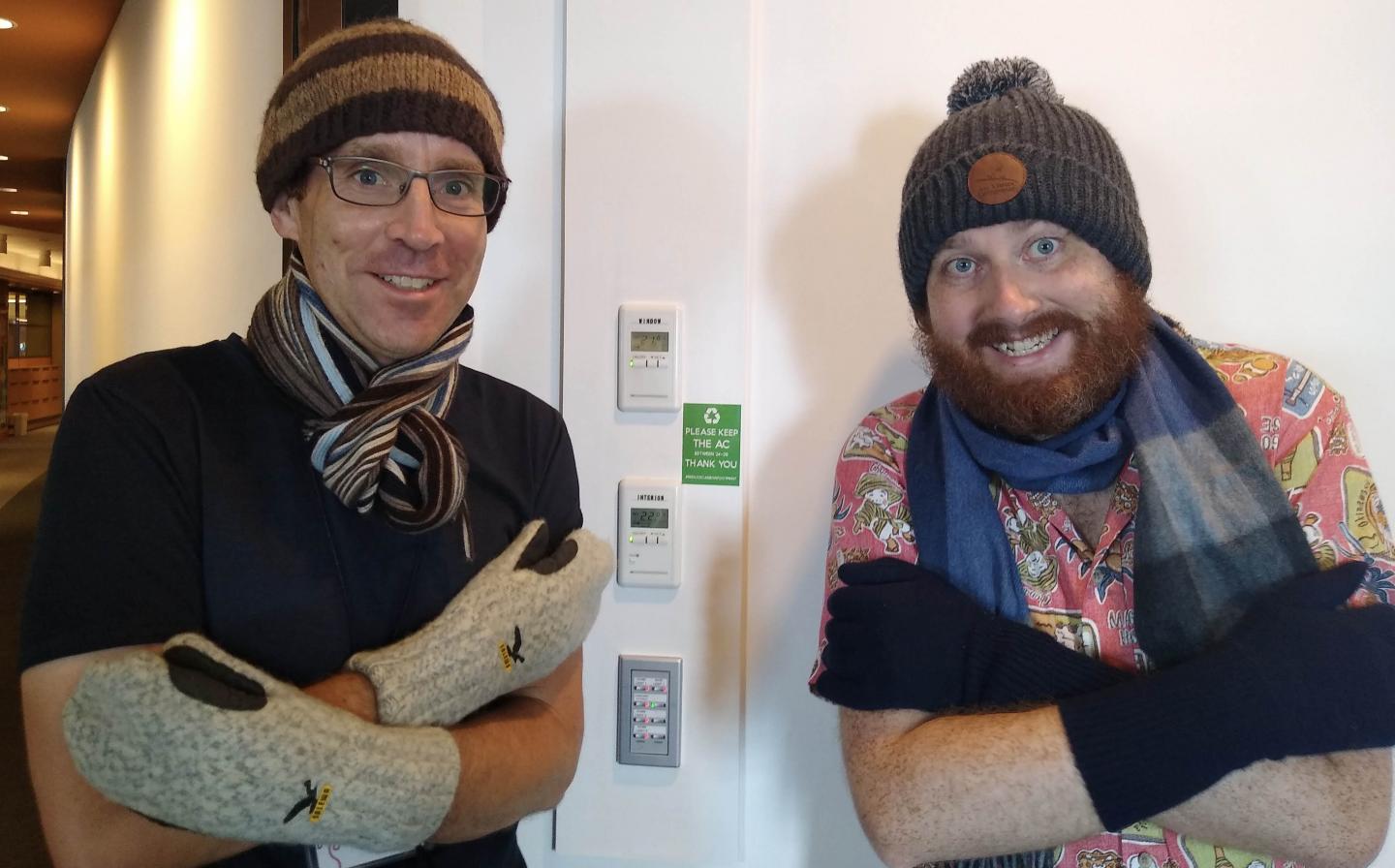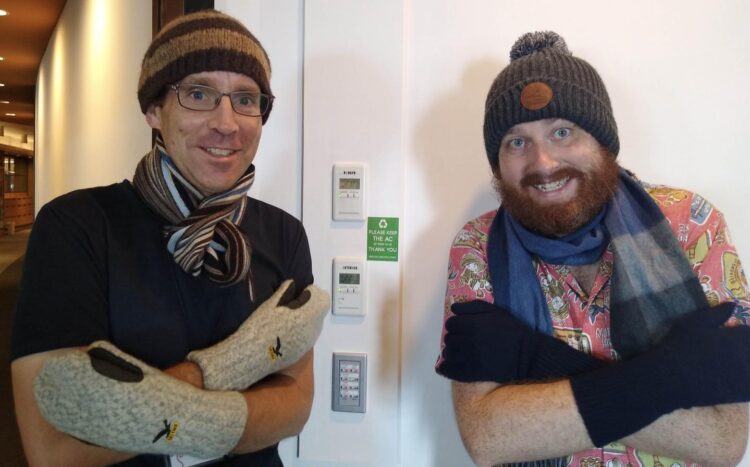Researchers show that a quantum sensor using a single atom can accurately measure the coldest places in the universe

Credit: OIST
In everyday life, measuring temperature is pretty straightforward. But in the quantum world, which deals with the super small and the ultra-cold, determining how hot or cold something is starts to get more challenging. Now, in a collaboration between the Okinawa Institute of Science and Technology Graduate University (OIST), University College Dublin and Trinity College Dublin, researchers have described a quantum process that uses a single atom as a thermometer to sensitively measure the temperature of an ultra-cold gas.
“As quantum physicists, our ultimate goal is to create and measure systems as close as possible to absolute zero. This is the lowest temperature limit, around -273°C or zero on the Kelvin temperature scale, and it’s when particles stop moving. These ultra-cold systems are important for successfully harnessing quantum technologies or reducing noise in quantum experiments,” said Professor Thomas Busch, head of the Quantum Systems Unit at OIST and co-author of the study, published as an Editor’s Suggestion in Physical Review Letters. “So being able to detect minute changes in temperature, at only tens of billionths of a degree above zero kelvin, is critical.”
Typically at room temperature there are more than a hundred billion trillion atoms whizzing about at speeds of up to 300 – 400 meters per second. “When we measure the temperature in a room, we don’t try and measure the movement of all these atoms, we just take measurements from a thermometer,” said Dr. Thomás Fogarty, a scientist in the Quantum Systems Unit. “Although one could, in principle, try to measure the velocity of all the atoms in a quantum system, we wanted to design a simpler and better method that uses a quantum thermometer.”
But using a thermometer to measure a quantum system isn’t simple. These systems are colder than any place that exists naturally in the universe. They are also very small, containing only about 100,000 atoms in the gas. If the thermometer is too large or too warm it would heat up the gas being measured and destroy the system’s quantum properties. So instead, the approach this collaboration took was to use a thermometer that was also very small and very cold – a single, super-cooled atom.
When first added into the system, this thermometer atom exists in two different energy states at the same time – a unique, counter-intuitive property of quantum systems. But as the thermometer atom interacts with the ultra-cold gas, the quantum features of this combined energy state decay. The rate at which this decay occurs is directly related to the temperature of the ultra-cold gas being probed, so as the scientists measure the state of the thermometer atom, they can accurately infer the temperature.
“This process essentially destroys the ‘quantumness’ of the thermometer atom through interactions with the gas, making it truly a quantum thermometer”, Dr. Fogarty explained.
The researchers also reported the optimal timings for when the measurements should be taken, as well as the ideal strength of the interactions between the single atom and the gas, to get the best sensitivity and the least amount of noise. The colder the gas, the slower the decay process occurs, as the single atom interacts more slowly and less often with the gas. “Therefore, in order to measure temperature at the lowest extremes we need to wait a long time before measuring and we require weaker interactions to maximize the signal and minimize the noise,” added Dr. Fogarty.
The team is now exploring numerous paths to improve the method’s sensitivity, such as by using machine learning to optimize the interactions between the thermometer atom and the gas, or by introducing more thermometer atoms into the system so more complex quantum interactions can occur.
“This new method has pushed the bounds of thermometry, which has important applications for quantum technology,” concluded Prof. Busch. “I expect that we are going to see it being used very soon in experiments.”
###
Media Contact
Tomomi Okubo
[email protected]
Original Source
https:/
Related Journal Article
http://dx.





